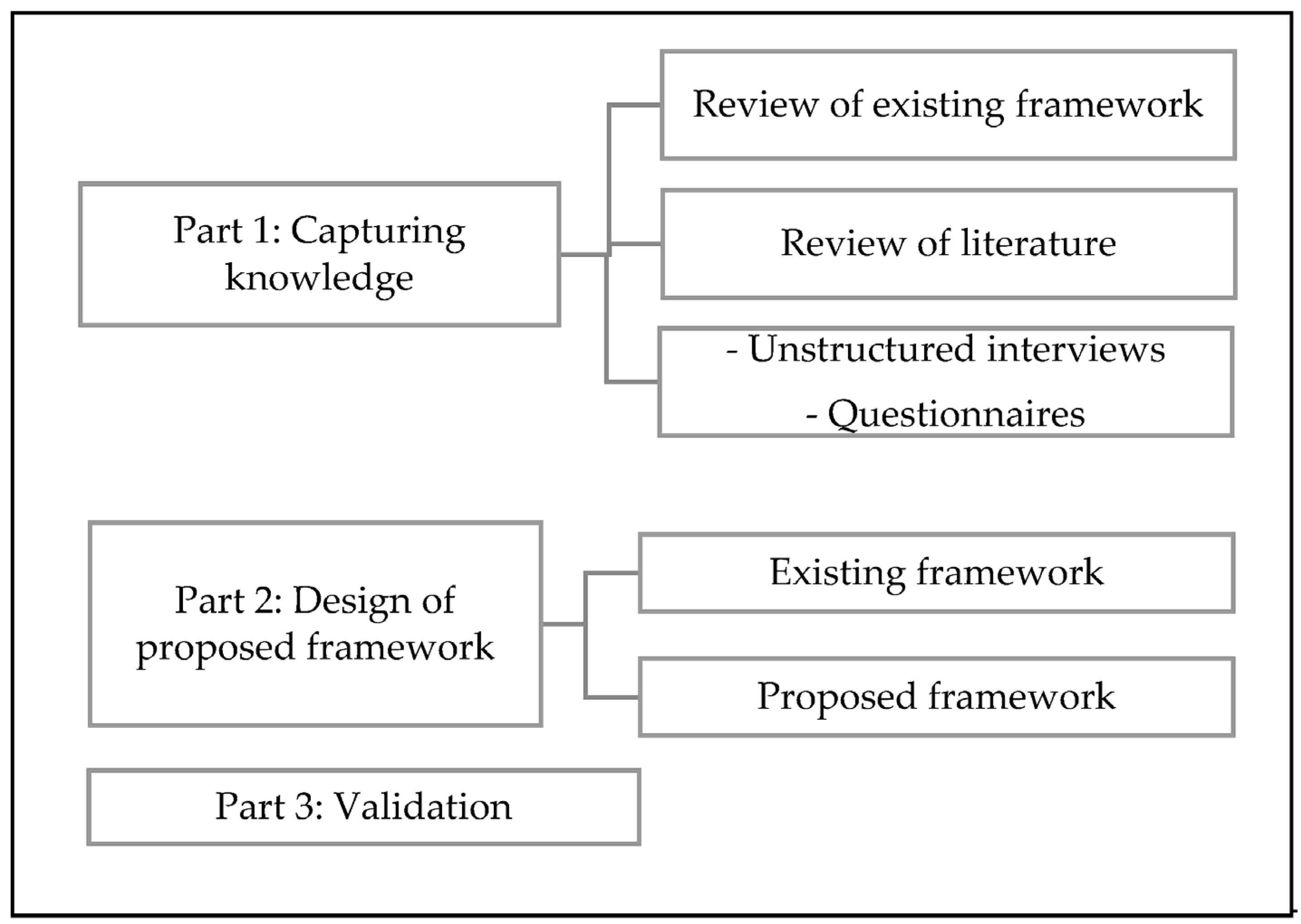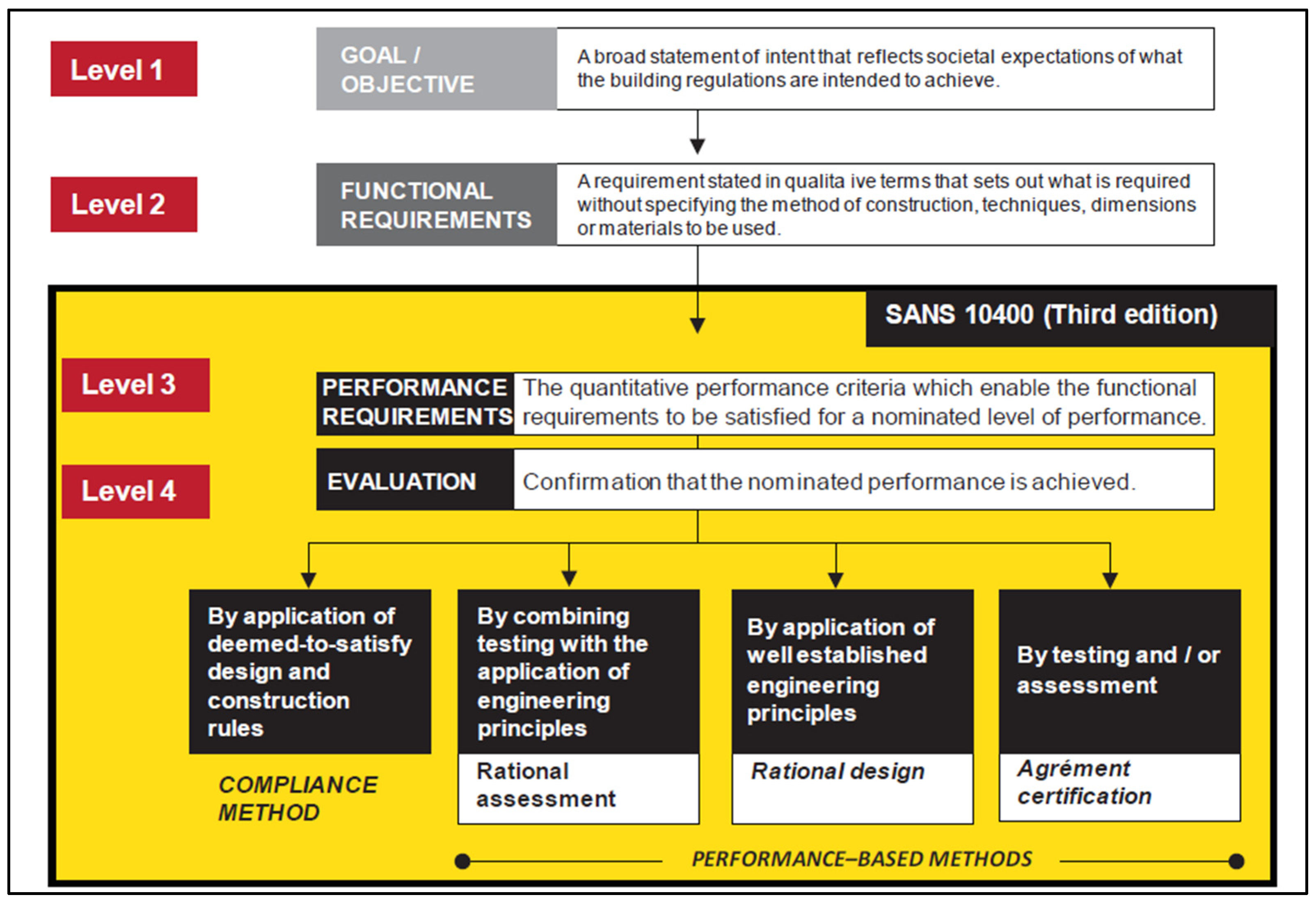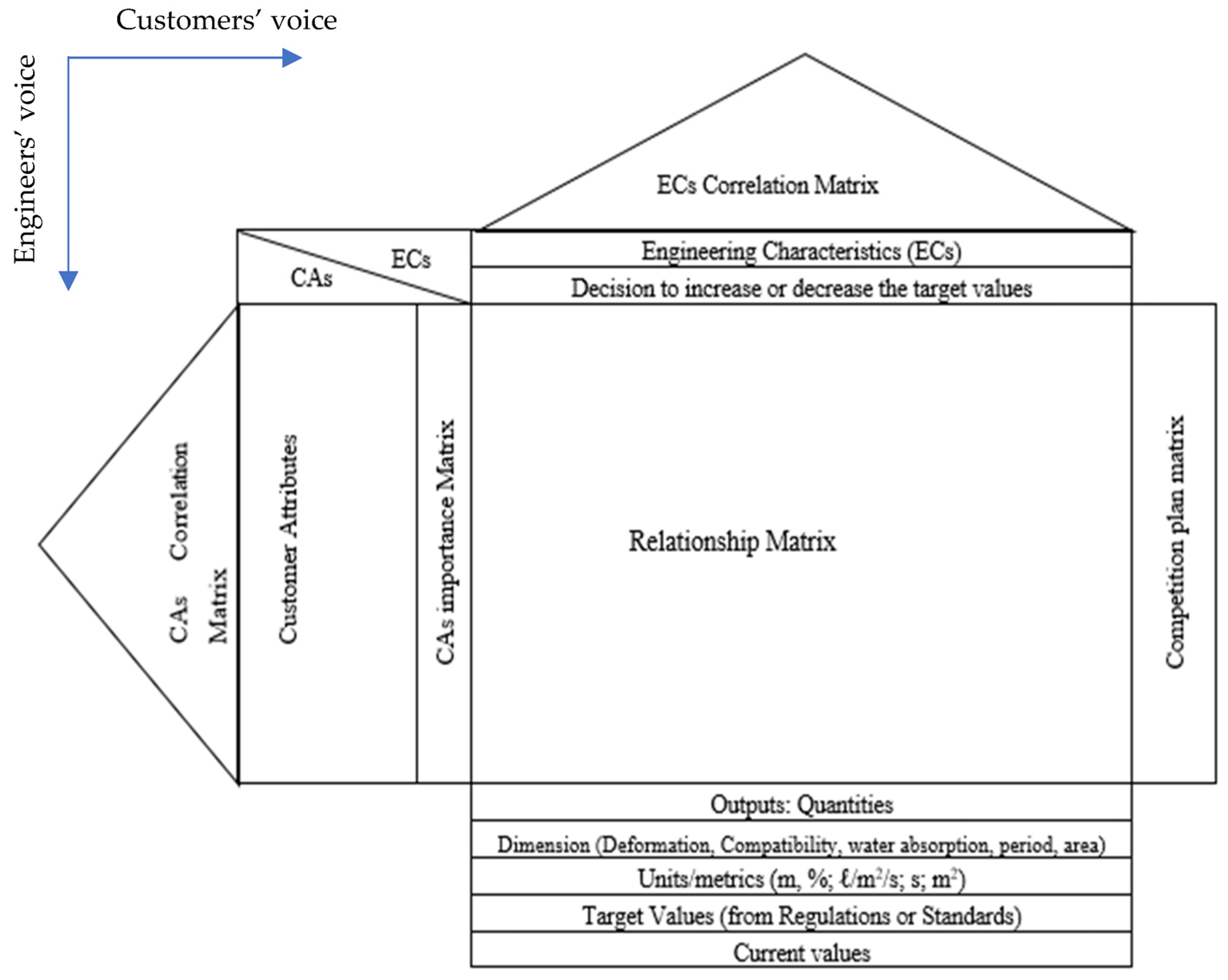Developing a Framework for Innovation in House Construction: An Exploratory Study of Emerging Techniques and Practices †
Abstract
:1. Introduction
2. Research Methods
3. Results
3.1. Qualitative Results
3.2. Existing Framework
3.3. Proposed Framework
4. Discussion
5. Conclusions
Author Contributions
Funding
Institutional Review Board Statement
Informed Consent Statement
Data Availability Statement
Conflicts of Interest
Appendix A. AHP on Customer Attributes
Appendix A.1. Initial Assumptions
Appendix A.2. Pairwise Matrix
| 1 | 2 | 3 | 4 | 5 | |
|---|---|---|---|---|---|
| 1 | 1.0000 | 5.0000 | 7.0000 | 7.0000 | 9.0000 |
| 2 | 0.2000 | 1.0000 | 5.0000 | 7.0000 | 7.0000 |
| 3 | 0.1429 | 0.2000 | 1.0000 | 1.0000 | 3.0000 |
| 4 | 0.1429 | 0.1429 | 1.0000 | 1.0000 | 3.0000 |
| 5 | 0.1111 | 0.1429 | 0.3333 | 0.3333 | 1.0000 |
| ∑ | 1.5968 | 6.4857 | 14.3333 | 16.3333 | 23.0000 |
Appendix A.3. Row Average Operation Matrix
| 1 | 2 | 3 | 4 | 5 | Priority Index | |
|---|---|---|---|---|---|---|
| 1 | 0.6262 | 0.7709 | 0.4884 | 0.4286 | 0.3913 | 0.5411 |
| 2 | 0.1252 | 0.1542 | 0.3488 | 0.4286 | 0.3043 | 0.2722 |
| 3 | 0.0895 | 0.0308 | 0.0698 | 0.0612 | 0.1304 | 0.0763 |
| 4 | 0.0895 | 0.0220 | 0.0698 | 0.0612 | 0.1304 | 0.0746 |
| 5 | 0.0696 | 0.0220 | 0.0233 | 0.0204 | 0.0435 | 0.0358 |
| 1.0000 |
Appendix A.4. Consistency Operation Matrix
| 1 | 2 | 3 | 4 | 5 | A = ∑ | A/Priority Index | |
|---|---|---|---|---|---|---|---|
| 1 | 0.5411 | 1.3612 | 0.5344 | 0.5221 | 0.3218 | 3.2805 | 6.0629 |
| 2 | 0.1082 | 0.2722 | 0.3817 | 0.5221 | 0.2503 | 1.5345 | 5.6367 |
| 3 | 0.0773 | 0.0544 | 0.0763 | 0.0746 | 0.1073 | 0.3899 | 5.1074 |
| 4 | 0.0773 | 0.0389 | 0.0763 | 0.0746 | 0.1073 | 0.3744 | 5.0195 |
| 5 | 0.0601 | 0.0389 | 0.0254 | 0.0249 | 0.0358 | 0.1851 | 5.1768 |
| 1.1529 | 5.4006 |
| Matrix Size | Random Consistency Index |
|---|---|
| 1 | 0.00 |
| 2 | 0.00 |
| 3 | 0.58 |
| 4 | 0.90 |
| 5 | 1.12 |
| 6 | 1.24 |
| 7 | 1.32 |
| 8 | 1.41 |
| 9 | 1.45 |
| 10 | 1.49 |
References
- National Home Builders Registration Council. NHBRC 2023. Available online: https://www.nhbrc.org.za/innovative-building-technologies/ (accessed on 15 September 2023).
- Republic of South African Government. Housing Consumers Protection Measures Act [No. 95 of 1998]; Republic of South Africa: Cape Town, South Africa, 1998; Volume 401. Available online: https://www.gov.za/sites/default/files/gcis_document/201409/a95-98.pdf (accessed on 15 September 2023).
- South African Bureau of Standard (SABS). SANS 10400: Application of the National Building Regulations, 1st ed.; SABS: Pretoria, South Africa, 1990. [Google Scholar]
- Madu, C.N. House of Quality in a Minute: A Guide to Quality Function Deployment, 3rd ed.; Information Age Publishing: Charlotte, NC, USA, 2019. [Google Scholar]
- Erdil, N.O.; Arani, O.M. Quality function deployment: More than a design tool. Int. J. Qual. Serv. Sci. 2019, 11, 142–166. [Google Scholar] [CrossRef]
- Saaty, T.L. The Analytic Hierarchy Process (AHP); McGraw-Hill: New York, NY, USA, 1980. [Google Scholar]
- Albaum, G.; Golden, L.; Murphy, B.; Strandskov, J. Likert scale and semantic differential: Issues relevant to cross-cultural research. In Proceedings of the Second Symposium on Cross-Cultural Consumer and Business Studies, Honolulu, HA, USA, 14–18 December 1987. [Google Scholar]
- Watermeyer, R. An Overview of the Current National Building Regulations and Their Impact on Engineering Practice; South African Institute of Civil Engineers: Midrand, South Africa, 2014. [Google Scholar]



| Customer Attributes (CAs) | Priority Index |
|---|---|
| Structural Integrity | 0.541 |
| Durability | 0.272 |
| Habitability | 0.076 |
| Sustainability | 0.075 |
| Ease | 0.036 |
| ∑ = 1 |
| Design Dimensions | Participant 1 | Participant 2 | Participant 3 | Participant 4 | Participant 5 | Participant 6 |
|---|---|---|---|---|---|---|
| Generating strength | x | x | x | |||
| Generating stability | x | x | x | |||
| Protect against water | x | x | x | |||
| Protect against fire | x | x | x | |||
| Ensuring sustainability | x | x |
Disclaimer/Publisher’s Note: The statements, opinions and data contained in all publications are solely those of the individual author(s) and contributor(s) and not of MDPI and/or the editor(s). MDPI and/or the editor(s) disclaim responsibility for any injury to people or property resulting from any ideas, methods, instructions or products referred to in the content. |
© 2023 by the authors. Licensee MDPI, Basel, Switzerland. This article is an open access article distributed under the terms and conditions of the Creative Commons Attribution (CC BY) license (https://creativecommons.org/licenses/by/4.0/).
Share and Cite
Mlasi, S.; Mahachi, J. Developing a Framework for Innovation in House Construction: An Exploratory Study of Emerging Techniques and Practices. Eng. Proc. 2023, 53, 31. https://doi.org/10.3390/IOCBD2023-15186
Mlasi S, Mahachi J. Developing a Framework for Innovation in House Construction: An Exploratory Study of Emerging Techniques and Practices. Engineering Proceedings. 2023; 53(1):31. https://doi.org/10.3390/IOCBD2023-15186
Chicago/Turabian StyleMlasi, Stella, and Jeffrey Mahachi. 2023. "Developing a Framework for Innovation in House Construction: An Exploratory Study of Emerging Techniques and Practices" Engineering Proceedings 53, no. 1: 31. https://doi.org/10.3390/IOCBD2023-15186
APA StyleMlasi, S., & Mahachi, J. (2023). Developing a Framework for Innovation in House Construction: An Exploratory Study of Emerging Techniques and Practices. Engineering Proceedings, 53(1), 31. https://doi.org/10.3390/IOCBD2023-15186






